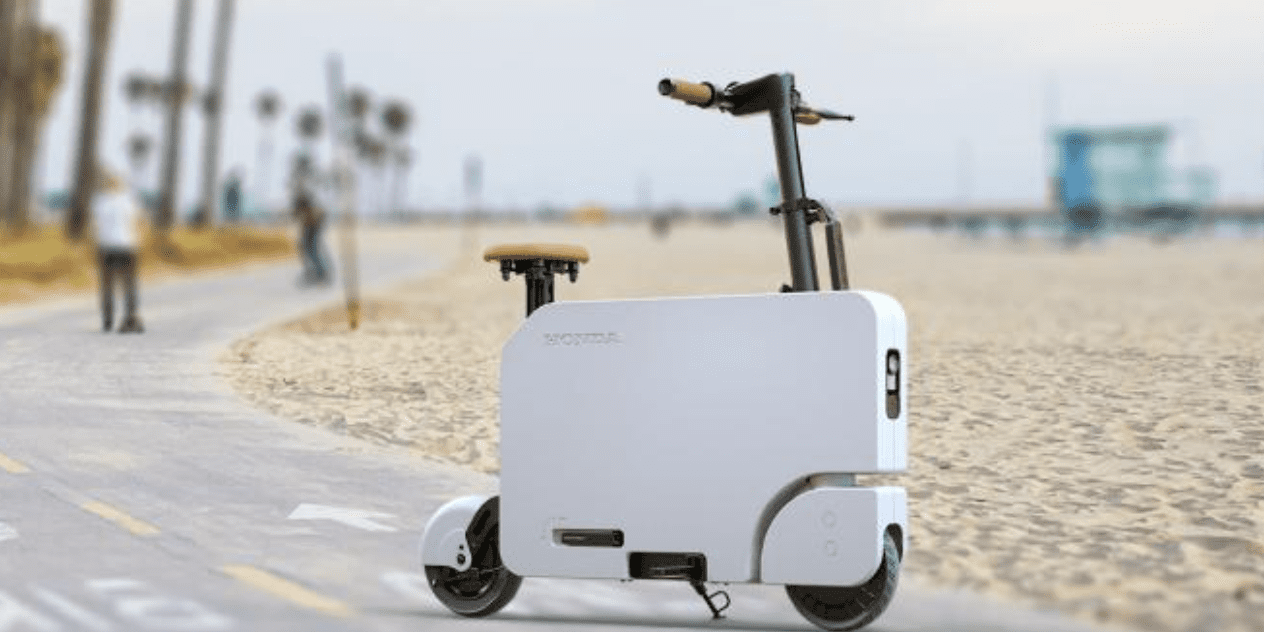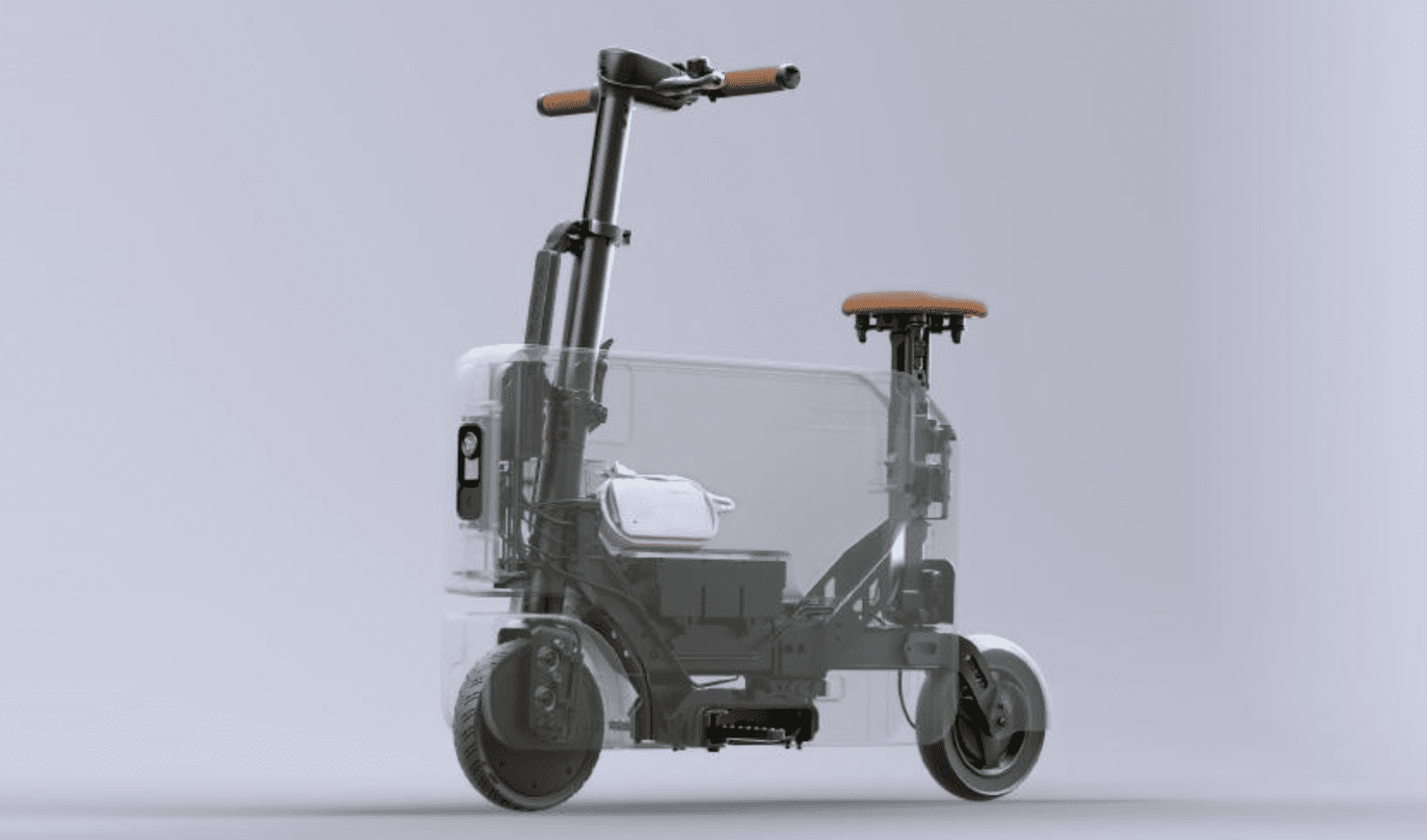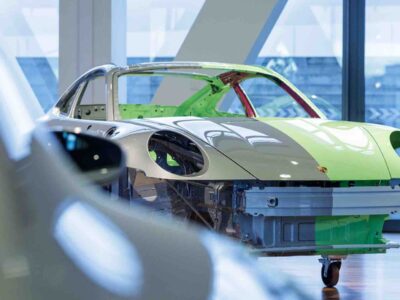Honda has taken an unconventional approach to the electric vehicle (EV) transition. Although they have a wide range of hybrid options, the first fully-electric Honda automobile is coming in 2024, the Prologue. Acura, Honda’s luxury brand, is launching the ZDX the same year. The automaker has also been working with Sony to develop the Afeela, a high-end car that seems like something out of a sci-fi novel.
The goal of the Afeela is a car with legitimate autopilot capabilities and PlayStation 5 connectivity. But maybe you just need a chill vehicle to get you to the pub and back. Ladies and gentlemen, Honda presents the Motocompacto.
Inspired by the Compacto scooter from the 1980s, the Motocompacto brings a sense of nostalgia into modern transportation. The e-scooter can be folded in a suitcase-style carrying case, allowing riders to dismount and carry their vehicle wherever.
Better yet, it’s cheap. Top Gear reports the Motocompacto only costs around $995. It’s expected to arrive at North American Honda and Acura dealers in November.

Photo Courtesy Honda
The specifications for the Motocompacto may not stand out, but it’s all about perspective. The battery range is only up to 12 miles. It’s not recommended to take this e-scooter anywhere far. For example, downtown Washington, D.C. — where The Business Download is based — is 6 miles from Arlington, VA, and that’s just the first Metro stop in Rosslyn. It’s probably not ideal to ride this e-scooter to South Arlington; the battery wouldn’t hold up. But taking it from your office to your apartment — that’s more realistic.
But maybe Honda isn’t aiming to make something that’s supposed to be uber-efficient. The Motocompacto is a return to the “fun” of transportation.
“Motocompacto is uniquely Honda — a fun, innovative, and unexpected facet of our larger electrification strategy,” Jane Nakagawa, vice president of the R&D Business Unit at American Honda Motor Co., Inc., said in a press release. “Sold in conjunction with our new all-electric SUVs, Motocompacto supports our goal of carbon neutrality by helping customers with end-to-end zero-emissions transport.”
The charging speed is quite impressive. Full battery can be reached in just 3.5 hours. It can hit 15 mph at max speed and has front-wheel drive.
Honda plans to sell these e-scooters alongside its next-generation electric cars and SUVs. Green Car Reports said that while they may not directly sell the e-scooter with the vehicles, it will certainly help Honda meet its corporate sustainability goals. Nakagawa expressed similar sentiments in the press release.
It’s user-friendly, too — a smartphone app controls the whole thing. Riders connect to the e-scooter via Bluetooth and can see all meters and gauges like range, speed, and charge rate.
The case weighs around 41.3 pounds and is 29.2 inches long. The wheels are still exposed, allowing people to roll the e-scooter even when folded.
If, for example, you were commuting by subway, you could fold it down and then re-open it to cruise to work. The wheels are accessible even in suitcase mode. It can be guided like a rolling bag. Then again, you could also skip the train and ride to work if it’s within the Motocompacto’s range.

Photo Courtesy Honda
“Uniquely foldable, Motocompacto quickly transforms into its own compact, light, and stackable carrying case that’s easy to take along in a vehicle, on public transportation, or store in tight places,” Honda’s press release said. Honda understands their target audience well.
The release of Motocompacto can help Honda reach its corporate sustainability goals. The Triple Action to Zero plan aims to reduce the company’s environmental impact to net-zero by 2050.
In addition to EV research and development, Honda will add renewable energy in business operations where applicable, use more sustainable materials in manufacturing, and eventually switch to full EV sales globally. It’s ambitious, but it could work if more people embrace going electric in the next 25 years.
The Motocompacto is ideal for those in crowded cities. It’s also much less expensive than a car. It’s an emission-free alternative to public transportation, with easy transport and storage. Honda may have a pretty good idea on their hands.





